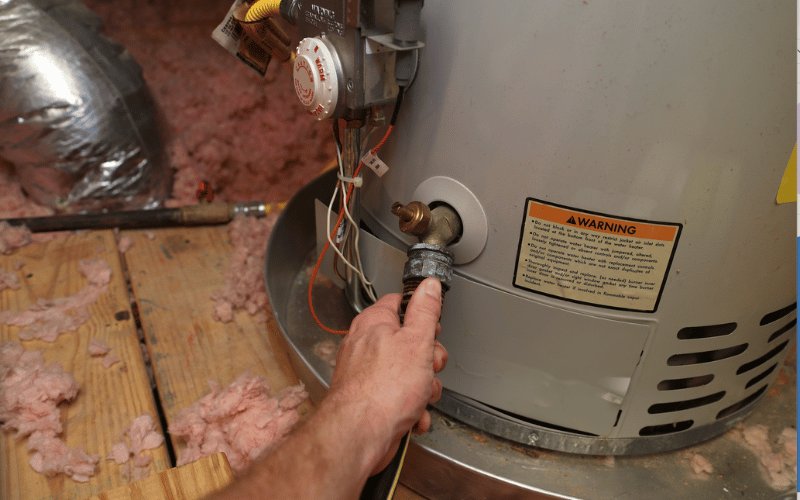Steps on How to Care for Your Home's Hot Water System Effectively
Recurring Service PlansThe author is making several good pointers related to Water Heater Maintenance Tips You Can't Afford to Forget as a whole in this article underneath.

Hot water is vital for everyday comfort, whether it's for a revitalizing shower or washing meals. To ensure your warm water system runs successfully and lasts much longer, regular maintenance is vital. This short article supplies functional pointers and insights on just how to keep your home's warm water system to avoid disruptions and pricey repairs.
Intro
Keeping your home's hot water system may seem complicated, however with a few simple actions, you can ensure it operates smoothly for several years ahead. This overview covers everything from comprehending your hot water system to do it yourself maintenance ideas and recognizing when to hire specialist aid.
Significance of Preserving Your Hot Water System
Normal maintenance not just prolongs the life-span of your warm water system but also guarantees it operates effectively. Overlooking upkeep can lead to decreased effectiveness, higher energy expenses, and also premature failing of the system.
Signs Your Warm Water System Requirements Maintenance
Recognizing when your warm water system requires attention can avoid significant problems. Look out for indicators such as irregular water temperature, odd sounds from the heating unit, or rustic water.
Understanding Your Hot Water System
Prior to diving into upkeep tasks, it's valuable to recognize the fundamental components of your hot water system. Generally, this consists of the water heater itself, pipelines, anode poles, and temperature level controls.
Month-to-month Upkeep Tasks
Regular regular monthly checks can help capture small concerns prior to they escalate.
Purging the Water Heater
Purging your hot water heater removes sediment build-up, boosting effectiveness and extending its life.
Checking and Replacing Anode Rods
Anode poles avoid rust inside the storage tank. Inspecting and changing them when worn is vital.
Examining and Readjusting Temperature Settings
Changing the temperature settings ensures optimum performance and safety.
DIY Tips for Maintenance
You can perform several maintenance jobs on your own to keep your hot water system in top problem.
Looking for Leakages
Routinely inspect pipes and connections for leaks, as these can result in water damage and greater costs.
Examining Stress Alleviation Valves
Testing the stress safety valve guarantees it operates properly and stops extreme pressure accumulation.
Protecting Pipes
Insulating warm water pipes minimizes warm loss and can save energy.
When to Call a Professional
While DIY maintenance is beneficial, some concerns require professional proficiency.
Facility Problems Requiring Professional Aid
Examples include significant leakages, electrical troubles, or if your water heater is consistently underperforming.
Regular Expert Maintenance Benefits
Specialist maintenance can consist of complete evaluations, tune-ups, and ensuring conformity with security criteria.
Final thought
Regular upkeep of your home's hot water system is necessary for effectiveness, longevity, and price savings. By adhering to these suggestions and recognizing when to seek specialist help, you can ensure a reliable supply of hot water without unanticipated interruptions.
How to Maintain an Instant Hot Water Heater
Before tinkering with your hot water heater, make sure that it’s not powered on. You also have to turn off the main circuit breaker and shut off the main gas line to prevent accidents. Also turn off the water valves connected to your unit to prevent water from flowing into and out of the appliance. 2. When you’re done, you have to detach the purge valves’ caps. These look like the letter “T†and are situated on either side of the water valves. Doing so will release any pressure that has accumulated inside the valves while at the same time avoid hot water from shooting out and burning your skin. 3. When the purge valves’ caps are removed, you have to connect your hosing lines to the valves. Your unit should have come with three hoses but if it didn’t, you can purchase these things from any hardware or home repair shops. You can also get them from retail stores that sell water heating systems. Read the user’s manual and follow it to complete this task properly. When the hosing lines are connected, open the purge port’s valves. 4. You should never use harsh chemical cleaners or solutions when cleaning your unit. Make use of white vinegar instead. It should be undiluted and you’ll probably use about 2 gallons. 5. Now flush your water heater. This task should probably take about 40 minutes. We can’t give you specific directions for this because the procedure is carried out depending on the type, model and brand of your heater. With that being said, refer to the user’s manual. 6. When you’re done draining the unit, you have to turn off the purge port valves again. Remove the hosing lines that you earlier installed on each of the water valves. Put the valve caps (purge port) back in their respective places and be very careful so as not to damage the rubber discs that are found inside these caps. 7. Now that everything’s back in place, check your user’s manual again to find out how to reactivate your water heating system. 8. Once it is working, turn one of your hot water faucets on just to let air pass through the heater’s water supply pipes. Leave the tap on until water flows smoothly out of it. https://www.orrplumbing.com/blog/2014/september/how-to-maintain-an-instant-hot-water-heater/

I'm certainly very involved in What Kind of Maintenance Do Water Heaters Need? and I am hoping you enjoyed the entry. Sharing is nice. Helping others is fun. Thanks so much for your time invested reading it.
This Page